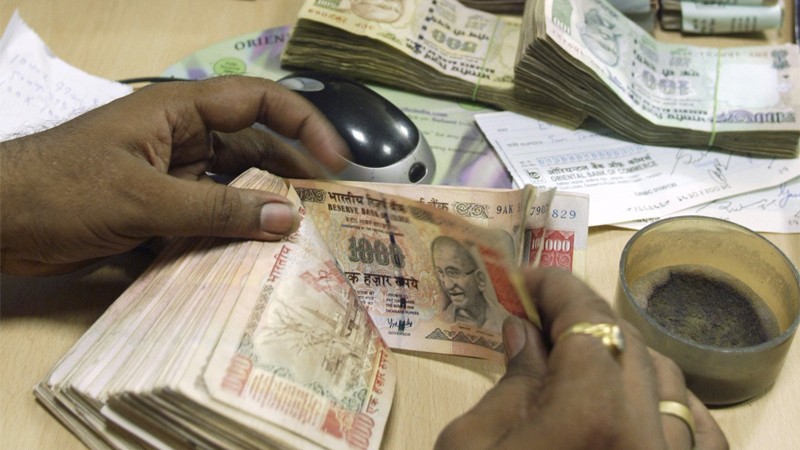India can be the World’s next big trading bloc

NEW DELHI, 10 MAY, (DNA) – A new Common Market is being formed. It has a bigger economy than the whole of sub-Saharan Africa, more states than the European Union has members, and twice the population of North America. It’s called India.
For more than six decades since independence, India’s 29 states have operated almost as separate countries. They set their own taxes, charged import duties on goods from neighbouring states, had their own politics, culture and even languages.
Prime Minister Narendra Modi is trying to change that, using his popularity among voters to replace more than a dozen levies with a single goods-and-services tax by next April, leaning on state governments to amend labyrinthine labour and land laws, and revamping the Soviet-style Planning Commission.
To win support from states, he’s pledged them a record share of federal tax revenue. “There are 29 mini Indias within one big India and they are modifying their approval process, procedures to make themselves competitive,” said Ajay S. Shriram, 61, chairman and senior managing director of DCM Shriram Ltd, a business with interests in sugar, chemicals and cement that has plants and offices in at least five states.
“States are trying for their own economic development, which will help improve the ease of doing business and boost the country’s growth.”
The new commercial competition is beginning to show. Ask Vineet Mittal, vice chairman of solar-power company Welspun Renewables. Five years ago, he tried to get permission to build a solar power plant in a southern Indian state. After six months of waiting for appointments with officials and being given the run around by government bureaucrats, he gave up.
Last October, he tried again. When he arrived at the airport, he was surprised to find liaising government officers waiting for him. They whisked him straight to meet senior bureaucrats and the chief minister of the state.
By March, Welspun was ready to start work on a 7.5 billion rupee ($118 million), 100 megawatt project, 20 times the size of the one he tried to propose in 2010.
“In the past, officials enjoyed making you wait, there was a level of sadism,” Mittal said in an interview in his New Delhi office. “There is drastic change in attitude and culture to attract industries.”
Given the size of India’s states and a predicted growth rate of at least 7.5 per cent over the next five years, the potential benefits of integration for investors are huge. In population terms, Uttar Pradesh is equivalent to Brazil, Maharashtra would be Mexico, while Bihar is on par with the Philippines.
Telangana, India’s 12th-largest state, is comparable to Canada.
“India’s states can be compared to major countries around the world,” McKinsey analysts including Jaidit Brar wrote in a report in October.
“Understanding their evolution and making the right bets from a five- to 10-year standpoint is critical to being well positioned for growth in the Indian market.”
Should Modi succeed in forging a single market, the biggest winners could be some of the poorest states. Like the boom for EU newcomers from Central Europe in 2004, growth in laggard states may consistently outpace the national average as India’s lopsided economy begins to balance out.
Eight Indian states accounted for about 45pc of the $1.8 trillion gross domestic product in 2012, led by Haryana and Maharashtra, the McKinsey report said.
“For India to grow at 9-10pc, many states of India have to grow at 15-16pc,” Amitabh Kant, secretary in the Department of Industrial policy & Promotion, said in a March interview.
“That’s easily do-able because there are very low levels of growth.”
India has forecast growth of as much as 8.5pc in the year ending March 2016, which would be the fastest among major economies. Achieving those levels of expansion will require states to adopt supportive policies, the McKinsey authors said.
That still means a political battle for Modi, whose Bharatiya Janata Party and its allies control 11 states, while the main opposition Congress party-led bloc holds nine, with the rest run by regional parties that include Communists and groups opposing Modi’s policies.
“The political colour of each Indian state has a significant impact upon their relations with the Indian federal government,” Rajiv Biswas, Asia-Pacific chief economist at IHS Global Insight, said from Singapore.
“States also need to realise that they are not just competing amongst each other, but also face global competition.”
The infighting, corruption and endless regulations have tarnished the country’s image for investors. India fell to 71st from 60th among 144 nations in the World Economic Forum’s Global Competi¬tiveness Index 2014/15, behind Rwanda and Romania. On the World Bank’s latest Ease of Doing Business Index, India’s position worsened to 142nd out of 189. =DNA
=======
Related News

Govt advisor pitches ‘Cashless Pakistan’ vision to foreign investors
ISLAMABAD, DEC 20 /DNA/ – Khurram Schehzad, Advisor to the Finance Minister of Pakistan, heldRead More

ICCI, Thai embassy agree to fast-track trade, tourism and investment cooperation
B2B meetings, delegation exchanges key to brining Pakistani-Thai business communities closer: Sardar Tahir Mehmood ISLAMABAD,Read More


Comments are Closed